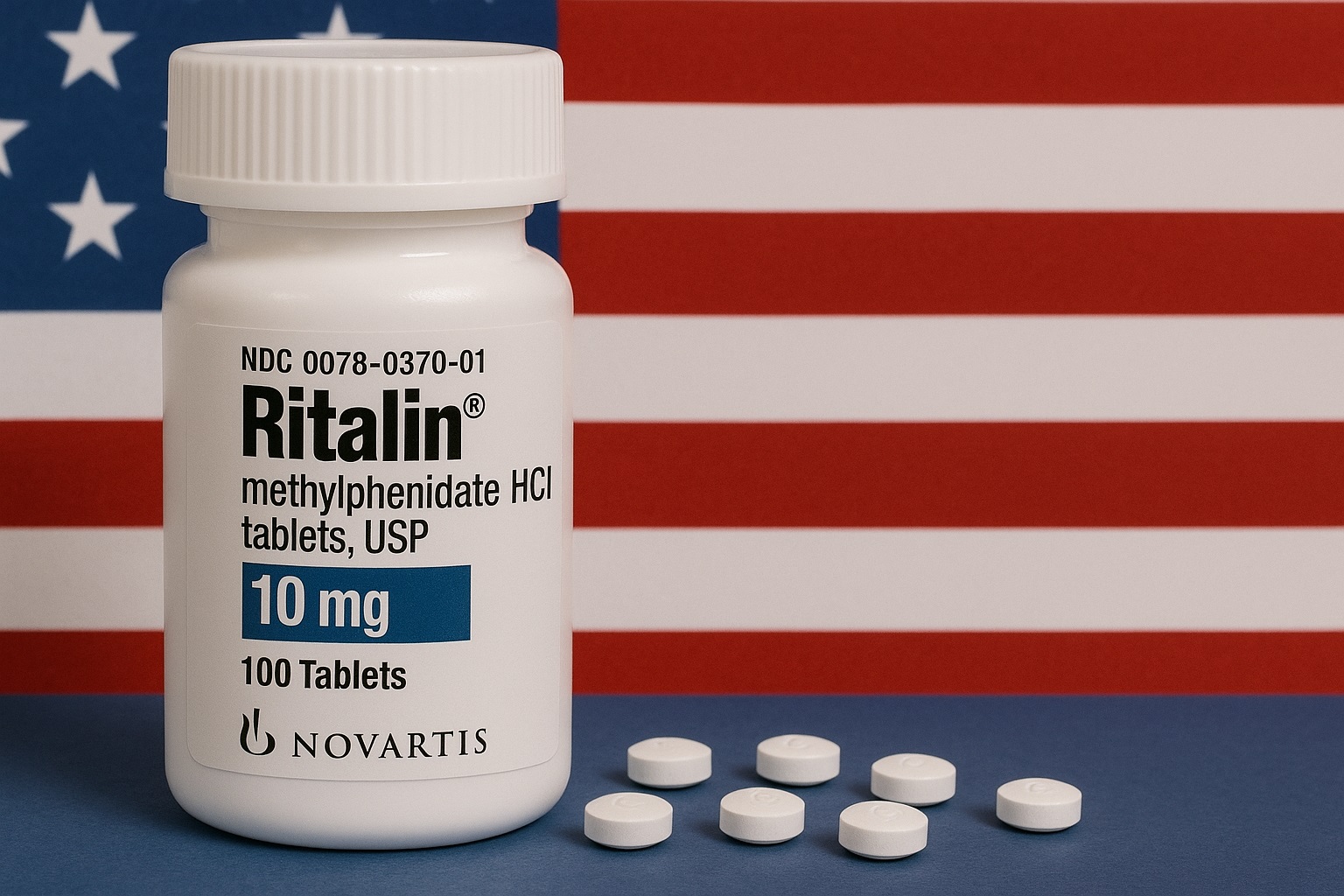We’ve spent over two decades supporting families, students, and professionals navigating the challenges of ADHD and related conditions. Few medications raise as many legal and practical questions as Ritalin (methylphenidate). While this stimulant has changed lives by restoring focus and stability, it also sits at the intersection of medical benefit and strict federal regulation. Have you ever wondered how something so essential for one person can be so tightly controlled under U.S. law? In this article, we’ll break down the legal status of Ritalin n the USA, drawing on clinical evidence, federal statutes, and our hands-on experience.
Ritalin as a Treatment: Medical Use and FDA Approval
Ritalin, chemically known as methylphenidate, is a central nervous system stimulant approved by the U.S. Food and Drug Administration (FDA) for:
- Attention Deficit Hyperactivity Disorder (ADHD) in children (6+) and adults.
- Narcolepsy, a chronic sleep disorder.
It works by increasing dopamine and norepinephrine in the brain, helping improve focus and reduce impulsivity. Clinical studies show ADHD symptoms improve in 60–70% of patients on Ritalin. However, side effects like insomnia, appetite suppression, or anxiety mean close medical supervision is essential.
Legal Classification of Ritalin in the USA: Schedule II Controlled Substance
Under the Controlled Substances Act (CSA), Ritalin is classified as a Schedule II controlled substance. This is the same category as Adderall and certain opioids.
- Why Schedule II? It reflects a high potential for abuse, balanced against recognized medical benefits.
- Consequences: Possession without a prescription is illegal, and penalties can include up to one year in prison and $1,000 fines for first-time offenders.
- Distribution or sales: Treated as trafficking, carrying far harsher penalties—even if the intent was “sharing” with a friend.
State laws often mirror federal ones, but enforcement can vary. For example, California classifies unauthorized possession as a misdemeanor, while Texas may impose felony charges.
Prescription Rules: Accessing Ritalin Safely
Because of its classification, Ritalin comes with strict prescribing requirements:
- Only licensed healthcare providers (psychiatrists, pediatricians, neurologists) can prescribe it.
- Prescriptions are usually limited to a 30-day supply; no automatic refills.
- Electronic prescriptions are increasingly mandated to prevent fraud.
- Telehealth rules: During the COVID-19 emergency, Schedule II medications could be prescribed via telemedicine, but the DEA is tightening regulations again. Initial in-person visits may soon be required.
At legalstatusof, we’ve helped families navigate these rules by building care plans that balance medication, behavioral therapy, and educational support.
Penalties for Misuse
The risks of misuse are not just medical—they’re legal.
- Simple possession without a prescription: misdemeanor charges, fines, or probation.
- Distribution (even sharing with classmates): can be prosecuted as felony trafficking.
- University cases: Students caught selling pills often face expulsion in addition to legal penalties.
We’ve seen first-hand how a single poor decision—like passing along a pill to a stressed friend—can derail an academic career.
Trends in Diversion and Abuse
National surveys (Monitoring the Future, NIDA) show that 4–6% of high school seniors admit to using stimulants like Ritalin without a prescription. Diversion often happens through:
- Sharing among peers.
- Fake prescriptions or “doctor shopping.”
- Online black-market purchases.
This has prompted the DEA to restrict manufacturing quotas, leading to periodic shortages reported in 2023–2024.
Traveling with Ritalin in the USA: Best Practices
If you’re carrying Ritalin:
- Keep it in the original labeled bottle.
- Carry a doctor’s note or prescription copy if traveling abroad.
- Be aware: some countries ban stimulants entirely (e.g., Japan, UAE).
Within the U.S., interstate travel is allowed with a prescription, but possession without one is still a federal crime.
Alternatives and Off-Label Use
While Ritalin remains a mainstay, alternatives exist:
- Stimulants: Adderall (mixed amphetamine salts), Vyvanse (lisdexamfetamine).
- Non-stimulants: Atomoxetine (Strattera), guanfacine, clonidine.
Some providers use Ritalin off-label for conditions like resistant depression or fatigue in cancer patients. These uses are legal but must be carefully documented.
Ritalin’s Schedule II status underscores a paradox: it is both a life-changing treatment and a tightly controlled substance. For patients, families, and educators, the key is compliance and communication—always work with licensed professionals, never share prescriptions, and stay informed about state and federal laws.
At LegalStatusOf.com, we stand for safe, ethical prescribing and patient empowerment. For official guidance, consult the FDA Drug Database or the DEA Controlled Substances List.
Because at the end of the day, protecting your health also means protecting your future.
